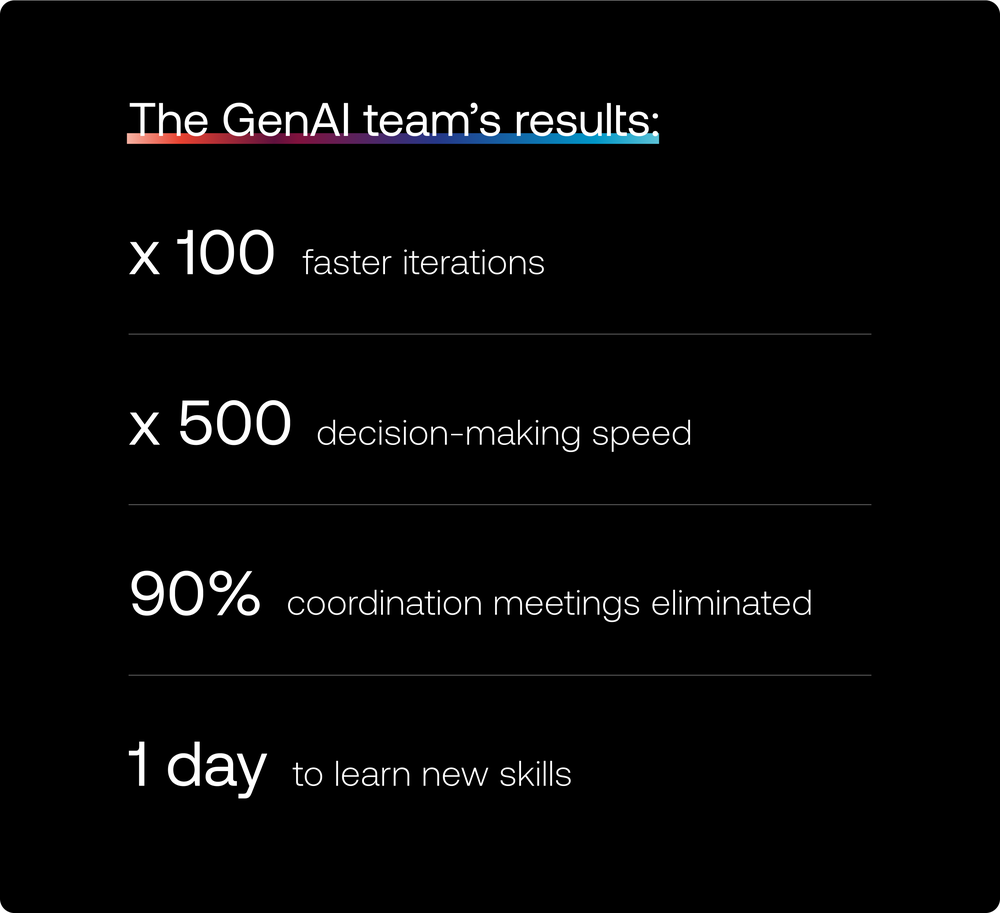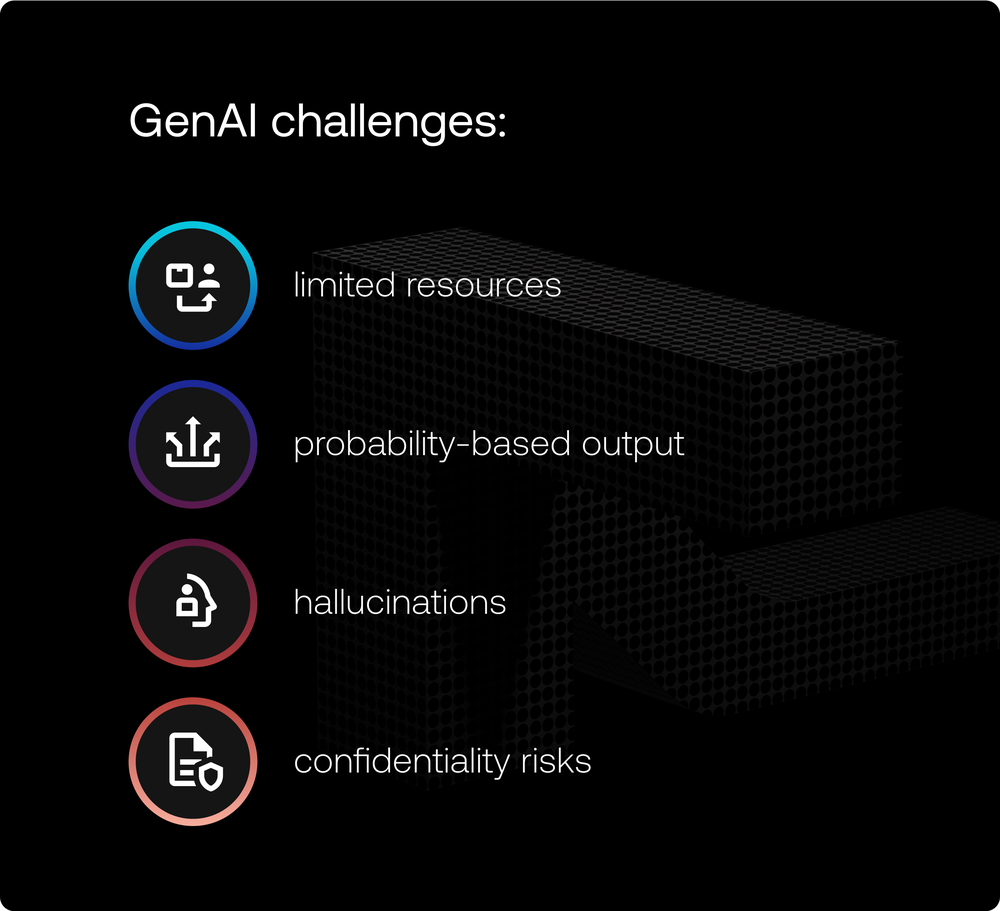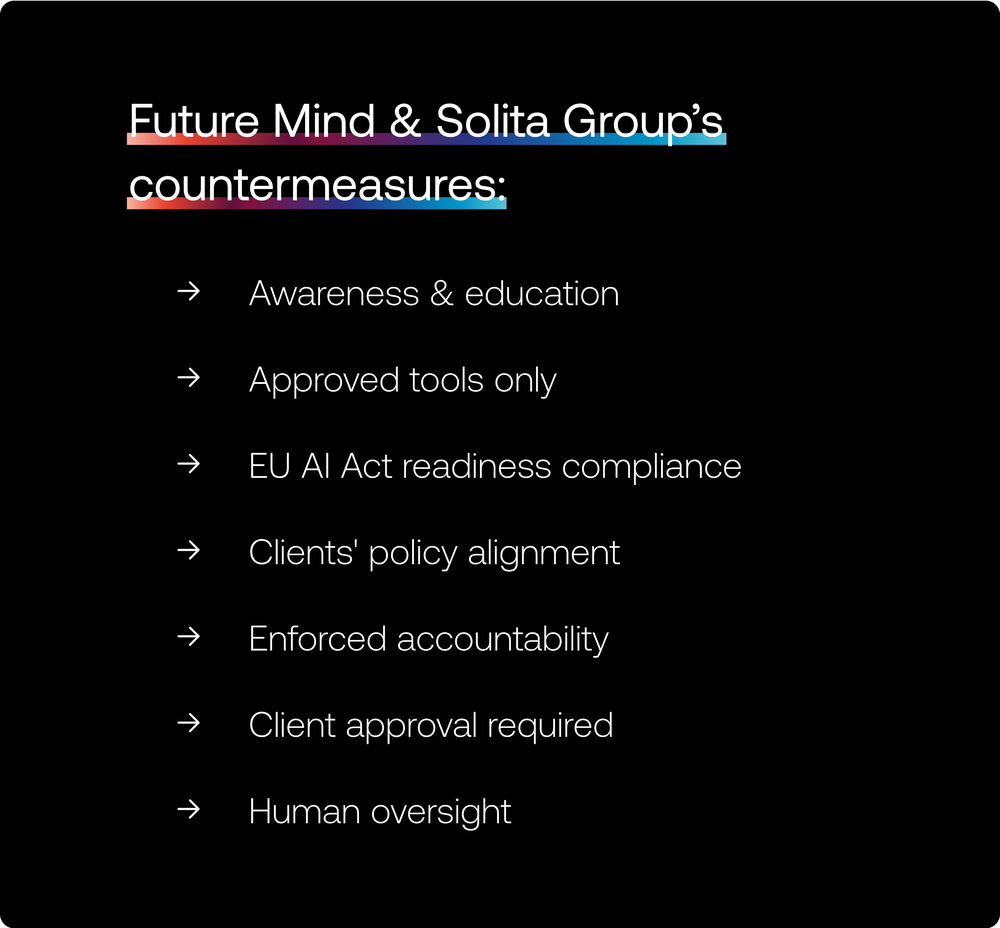
Thanks to its ability to generate text, code, images, and even video, Generative Artificial Intelligence (GenAI) might look like an answer to many problems. And that can be true – in the right hands, it’s possible to achieve 100x faster iterations with the help of AI, as proven by Solita. But more often than not, applying this technology to real-life scenarios isn’t as effortless as just generating content.
After all, 77% of employees are unsure of how they can use GenAI to support them in their daily jobs, according to Slingshot. And no wonder – the integration of GenAI tools into workplaces still has a long way to go.
However, one sector that should be ahead of the curve is technology. Compared to other areas, employees working in technology and telecommunications report using GenAI tools more often. According to our recent study of Polish professionals, 65% of IT workers use GenAI tools at least once a week, compared to 41% from other industries.
To keep track of the current trends, a similar study was conducted among the employees of Future Mind & Solita Group. Turns out, 79% consider themselves to be regular users of GenAI tools.
According to McKinsey, companies can expect cost decreases and revenue jumps as returns on investment in GenAI. But to paint a much clearer picture, Solita decided to test it out itself.
Along with ISS, a facility management company, our partner launched a “GenAI Twin Project” with the goal of testing GenAI capabilities in a real-life scenario of a business setting. Two teams, one armed with GenAI tools and the other serving as the control group, were tasked with developing the same digital product for the same company.
The results undoubtedly spoke in favor of the GenAI team, resulting in faster iterations, an accelerated decision-making process, fewer meetings, and less time needed to learn new skills.

To make the most of GenAI for process optimization and automation, it’s important to acknowledge the limitations and challenges of this fledgling technology.

The last point is by far the most important one for businesses, since it’s easy to accidentally share information that breaches client confidentiality. Therefore, any GenAI tool should be checked for functionalities that ensure privacy. In the case of ChatGPT, that would require investing in Enterprise mode, which promises not to use the data to train the GenAI model. Another popular tool, Copilot, requires changing settings, which are turned on by default to use your data.
Aware of these challenges, at the Solita Group, including Future Mind, we have introduced countermeasures to ensure the highest quality of our digital solutions:

GenAI tools are far from perfect. There are still some areas that leave much to be desired, while in others, they outperform specialists. Based on a survey conducted among the Future Mind & Solita Group employees, we’ve pinpointed several use cases where GenAI turns out to be most useful.
GenAI tools can generate a huge amount of content in just a few minutes, making it great for coming up with ideas and good starting points. After all, for many creatives – including developers – there’s nothing worse than looking at an empty file. With the help of GenAI, you can quickly jumpstart your project by skipping ahead in the conceptual phase.
You can also use GenAI tools to clash different ideas together. While GenAI hardly ever comes up with truly brilliant ideas, it can give you an outsider perspective on your problems and solutions. It can also point out the basic issues that can be easily forgotten while thinking of the bigger picture.
Coding includes manual tasks that are necessary, yet time-consuming. For example, if one value needs to be changed in almost finished code, and it appears throughout the whole project, a developer may have to replace all these values manually if they lack the right tools. With GenAI, you can ask it to replace all these values for you. And when it knows the context of the entire project, it can make fitting adjustments to take the rest of the code into consideration.
There’s really no reason to reinvent the wheel with every new project. Reusing older pieces of code – as long as they don’t fall under any copyright – can accelerate the development process by leaps and bounds. Moreover, it decreases the chance of having bugs or any inconsistencies, since the code was already tested.
GenAI can only make reusing the code even easier with real-time recommendations, streamlined updates, dependency insights, and automation.
Code review, while undoubtedly a necessary part of any development, can stall any further progress awaiting the feedback – team members stuck in meetings or simply enjoying their holidays can throw a wrench into any plans.
To optimize the process, an increasing number of helpful tools are emerging to help analyze code, provide feedback, remind developers of best practices and common pitfalls, as well as ensure consistent quality across the entire project. Of course, the last word will always belong to a fellow specialist, but GenAI tools can facilitate the process and catch the most obvious mistakes.
In quality assurance, the answers to “what the user won’t do” are much fewer than to “what the users will do”. In the case of the latter, the possibilities might be nearly endless, and it’s a given that unexpected edge cases will appear.
Thankfully, GenAI tools can be used to generate hundreds of detailed scenarios based on specified requirements and user stories, making sure no cases are left untested.
Introducing new team members to an already existing project is always a challenge, especially when new languages are involved. The whole team has to ensure the newcomer is up-to-speed and understands the decisions that influence the code. Without it, the newly written code may be inconsistent with the rest of it.
GenAI can help out in this case as well. When prompted, it can give exhaustive explanations about the code, which can be adjusted to fit any circumstances and the level of knowledge. It can also remind us of the practices we used based on the context of the whole project.
Is there anything the GenAI tools can’t do?
Absolutely. For example, because GenAI is based on probability, it won’t come up with truly unique ideas, or such that could be considered interdisciplinary. After all, GenAI simply regurgitates what it was already told. But it can be used in reverse, to see what kind of ideas are most common or to evaluate our own.
Moreover, the more unusual the project, the more difficult it will be for GenAI tools to follow. It also applies to the newest technologies; since they aren’t as well documented as the older ones, the GenAI won’t have the required resources to generate proper answers from.
GenAI tools have become commonplace amid the Future Mind & Solita Group employees, with ChatGPT and Copilot being the most often used ones. Still, because the technology lacks maturity, it requires further experimentation and testing to become a truly dependable part of any development process. But even the way it is now, GenAI already helps us achieve impressive results, from previously unseen productivity and efficacy levels to reducing time spent on redundant tasks.
But most importantly, these achievements translate into faster development and higher quality of developed solutions. By leaving the repetitive and time-consuming tasks to GenAI, developers can focus on the crux of the project and spend more time coming up with creative solutions. This also means that more time can be devoted to quality assurance, double and triple checking more scenarios, ensuring that no stones were left unturned.